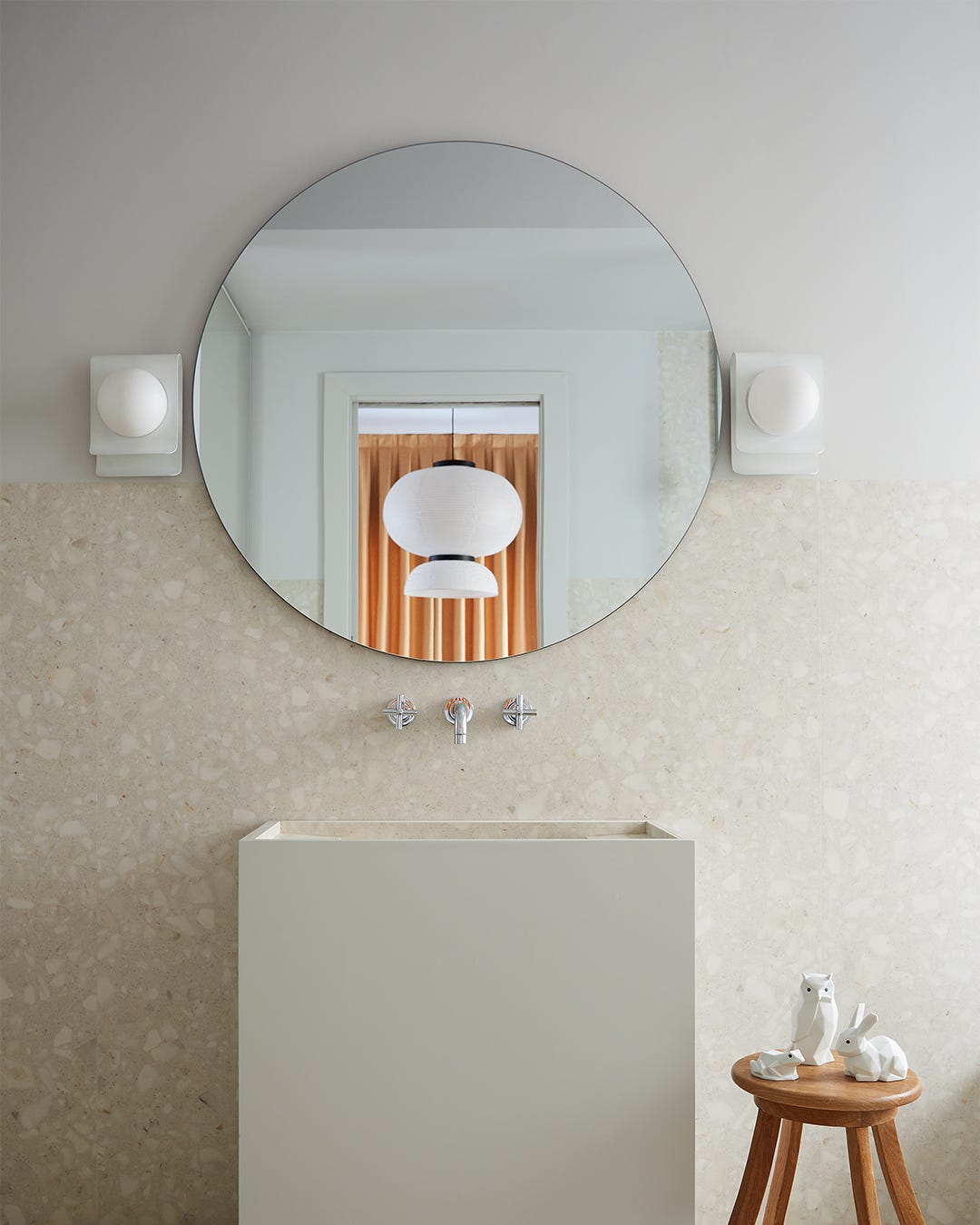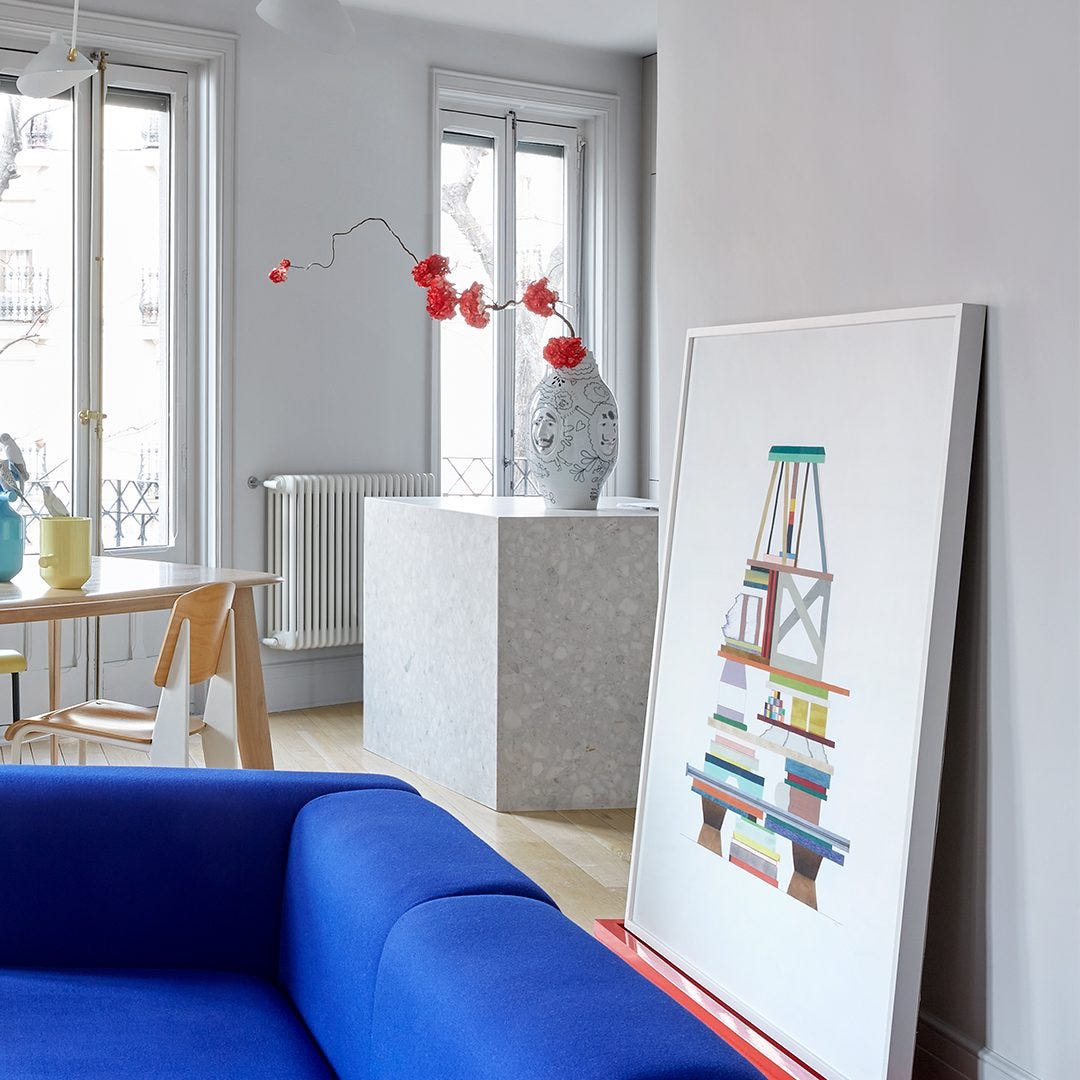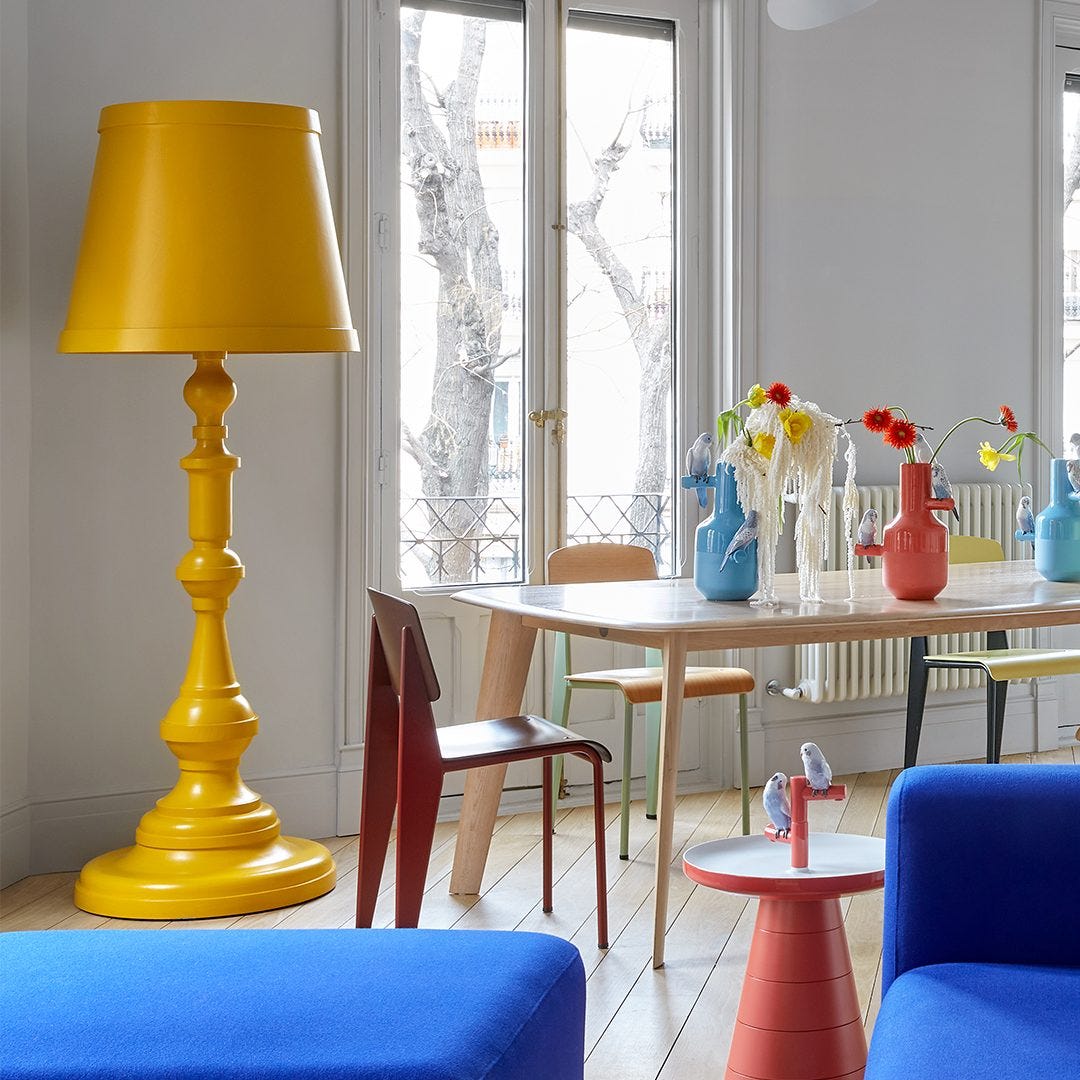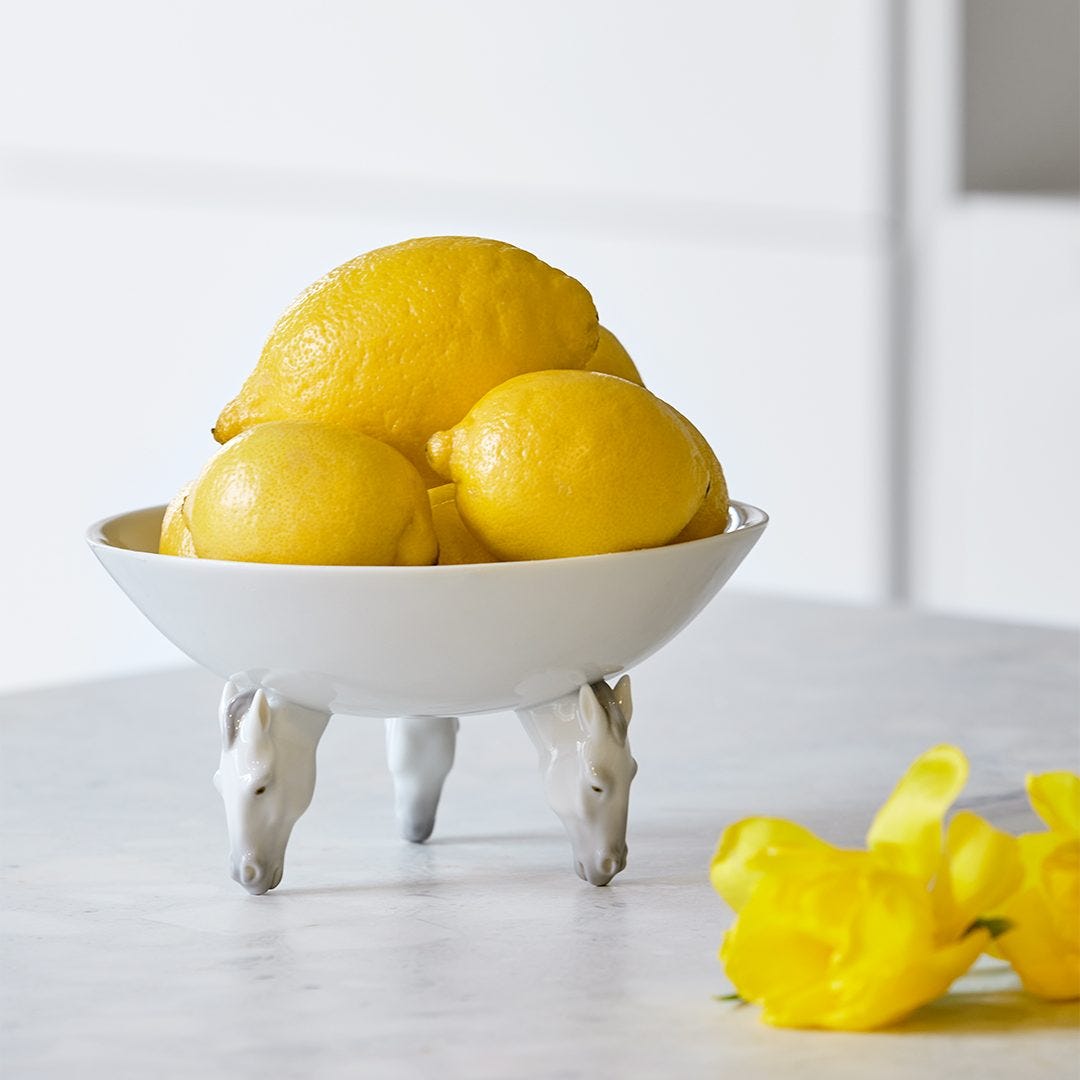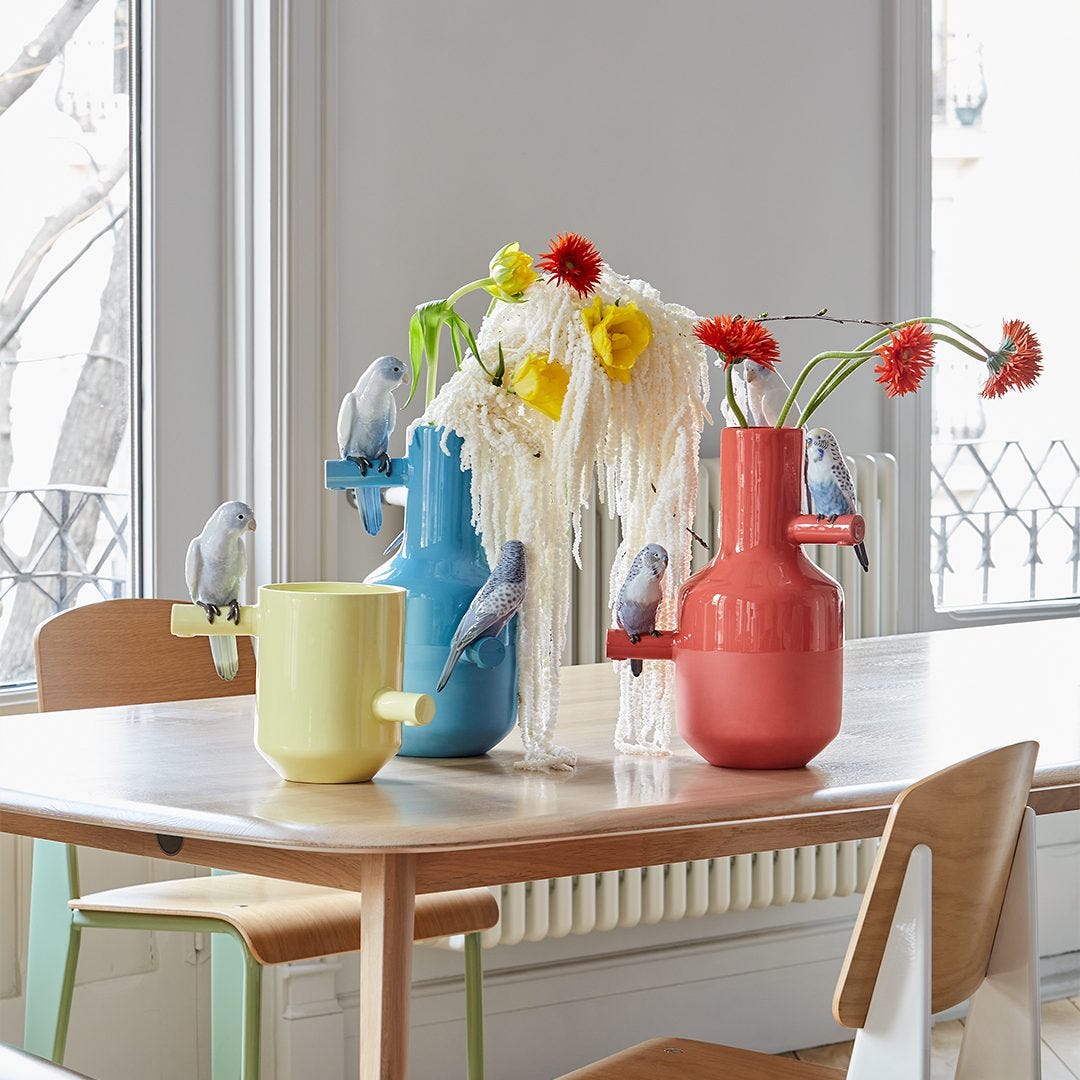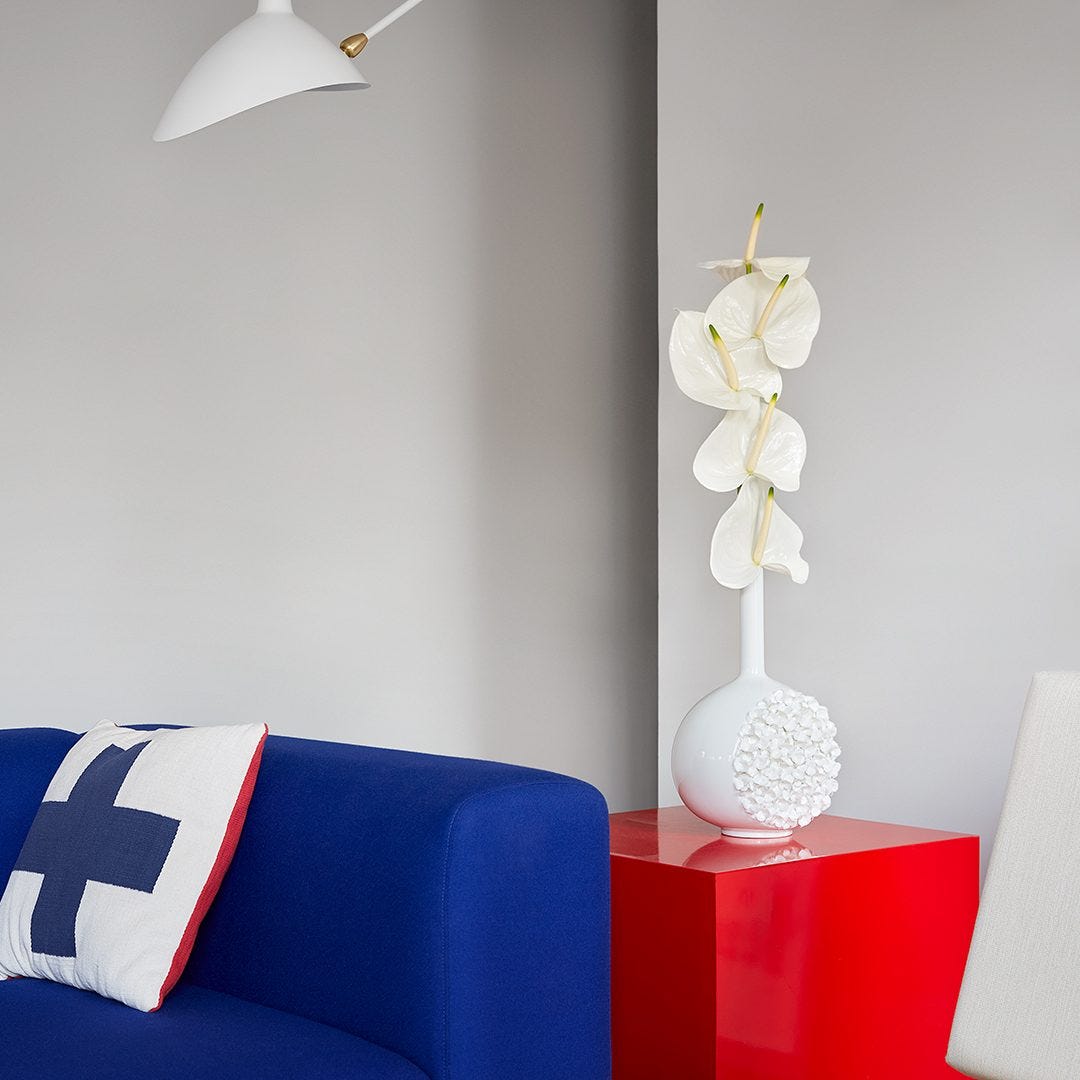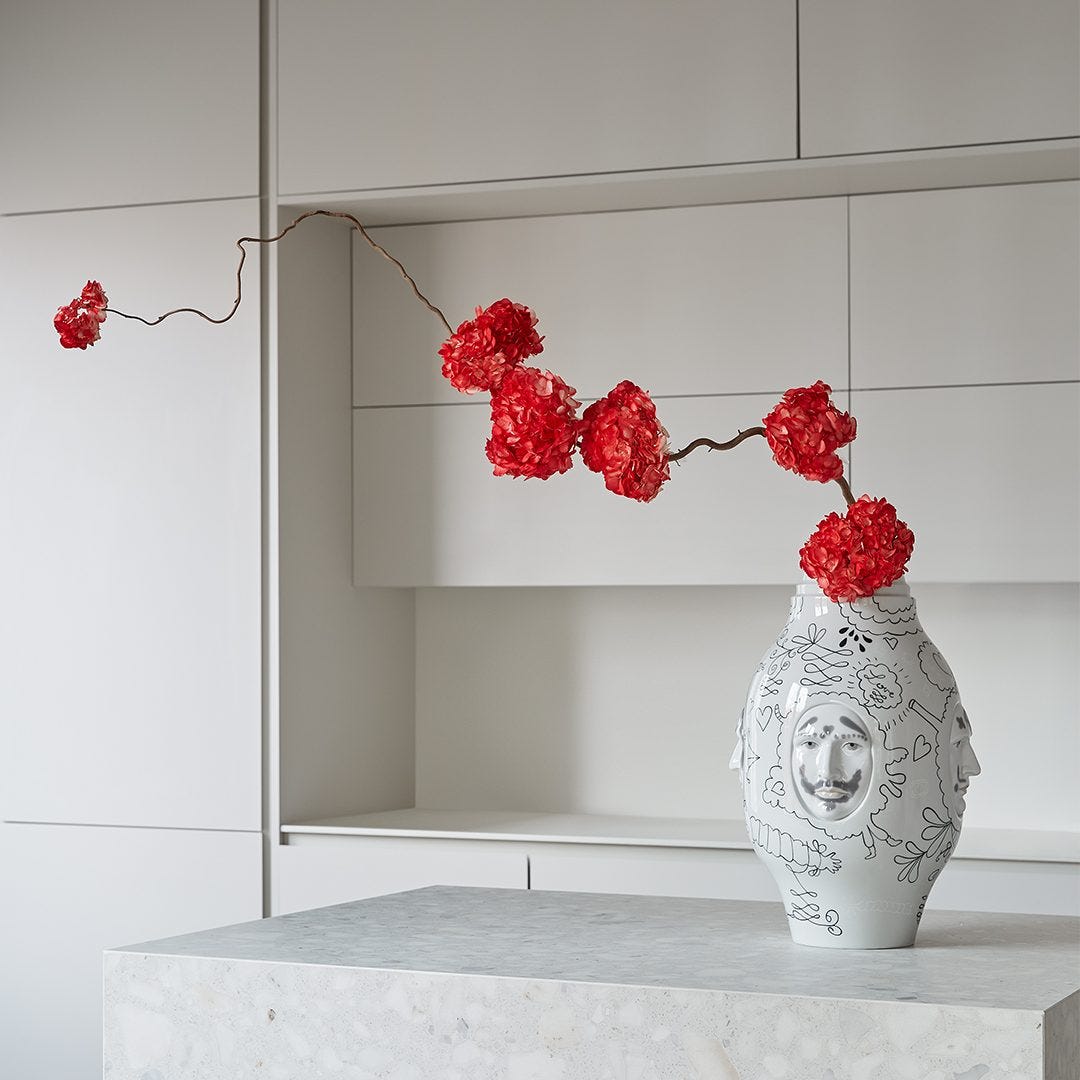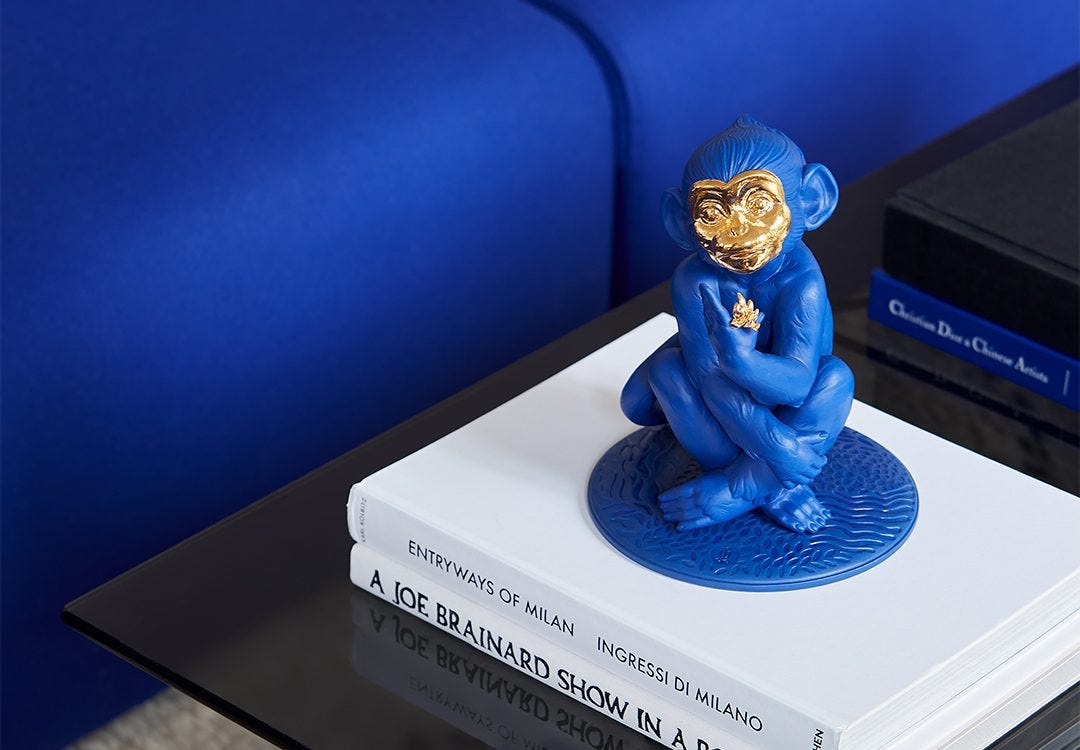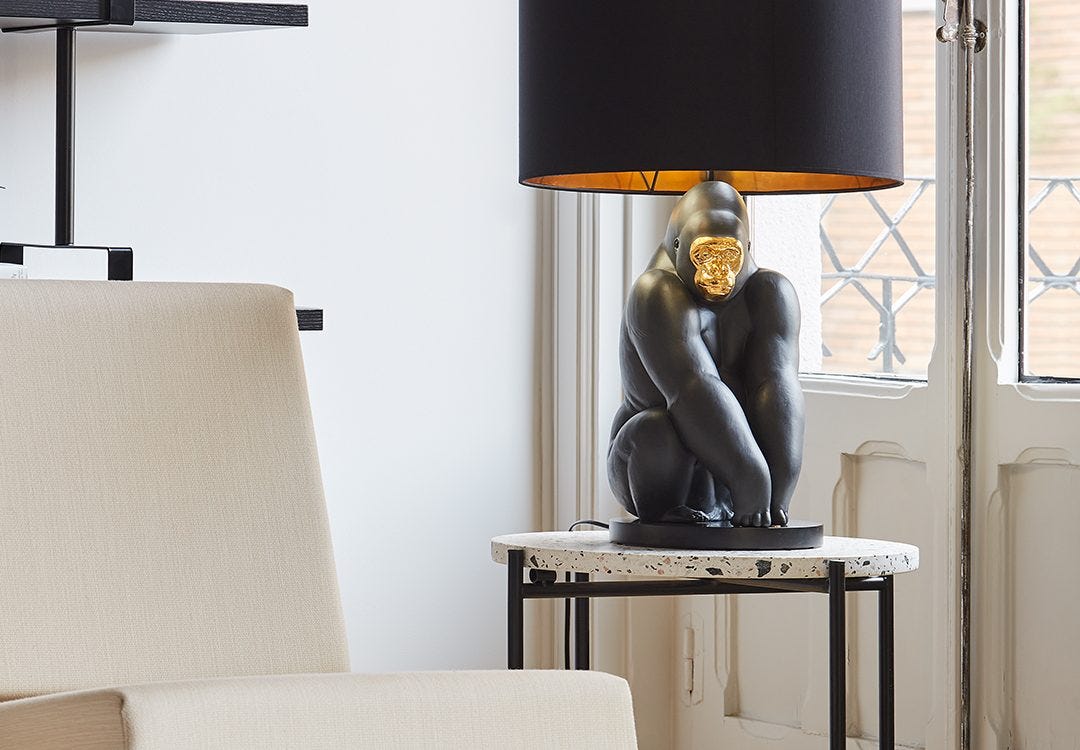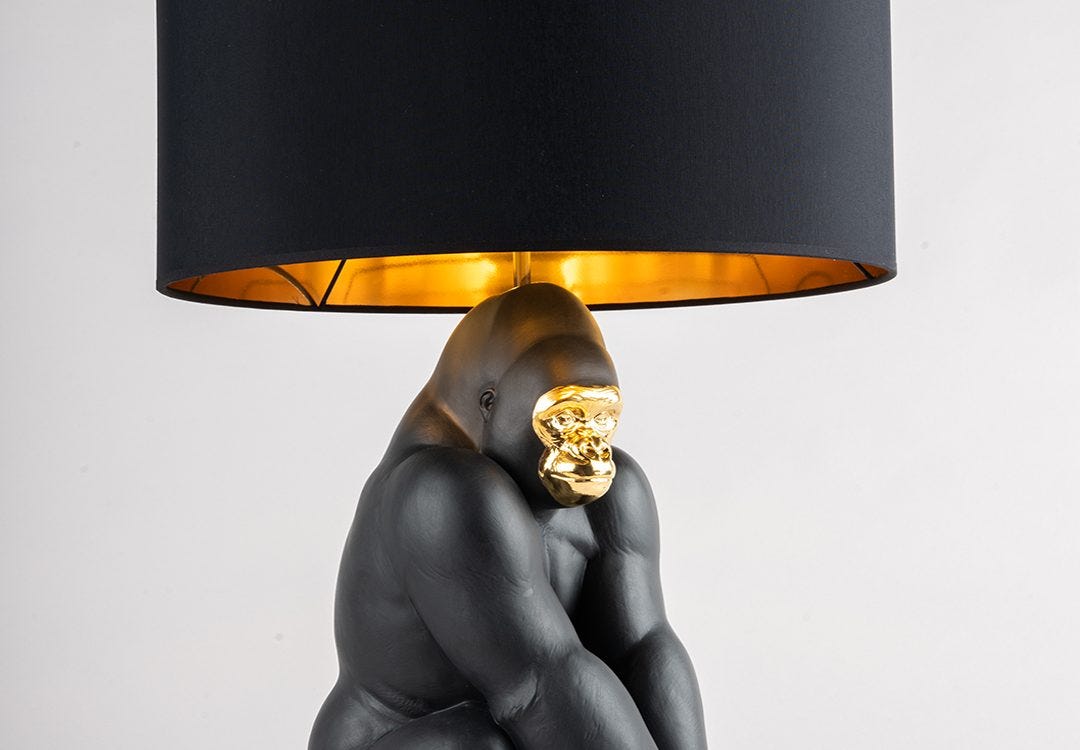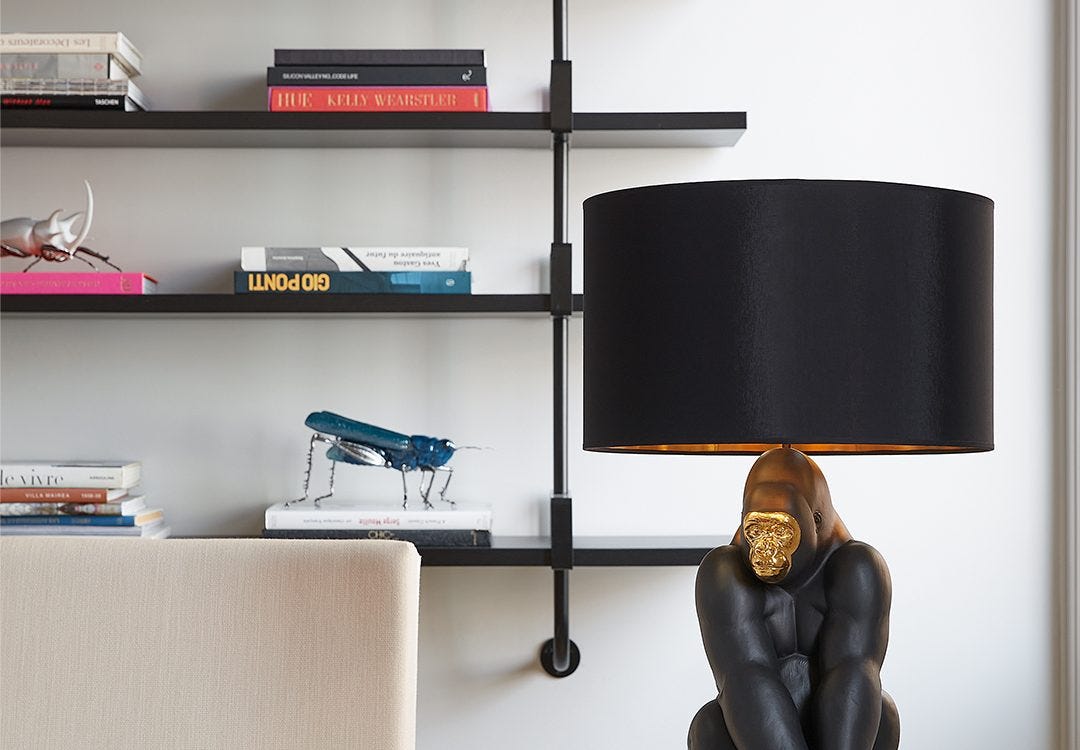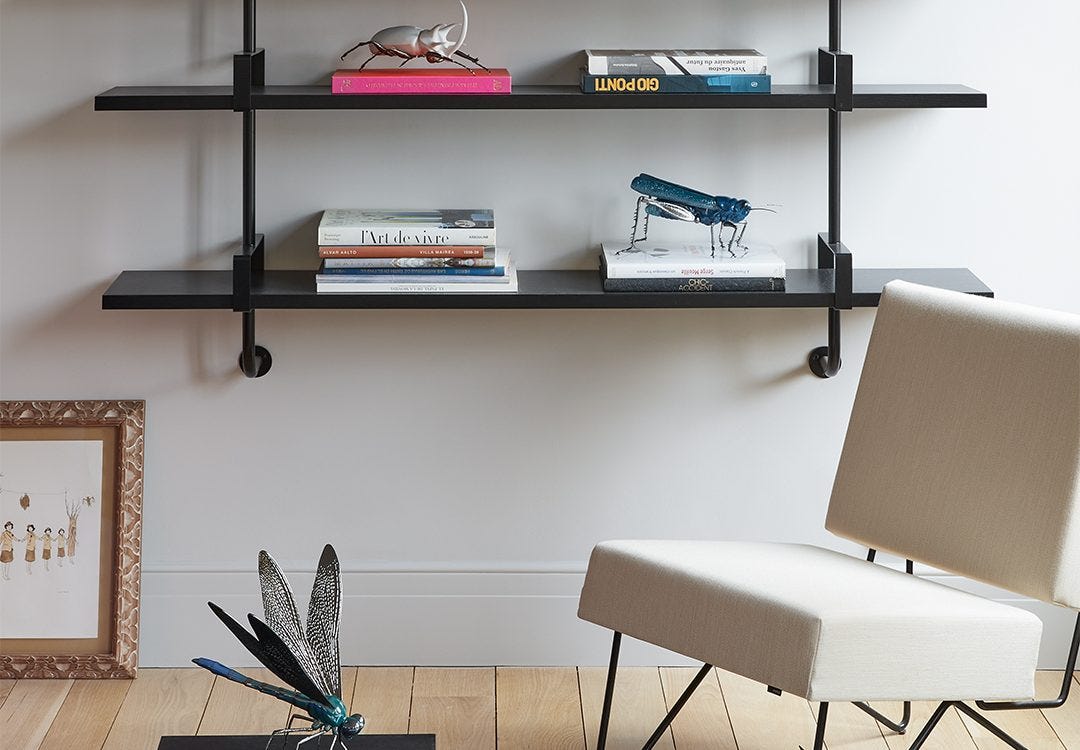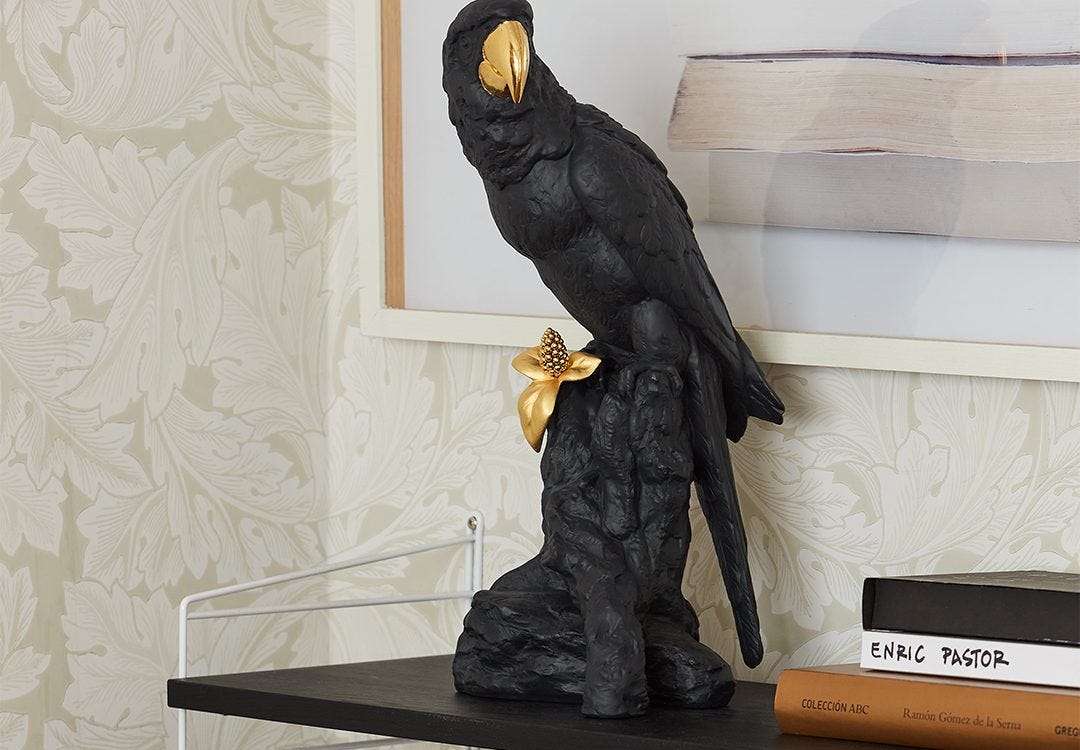Enric Pastor, the renowned journalist specialized in interior design and editor of the new magazine Manera —after more than a decade at the forefront of AD España—invites us on a virtual tour of his home in this interview for Lladró Magazine.
For this Valencia-born, Madrid-based journalist, home is above all a question of emotions and memories, which are valued and treasured by carefully selected touches of design, functionality and homeliness. The various rooms are perfectly thought-out to ensure intimacy and, at once, sociability with family and friends.
The straight lines and neutral colors in this home create a very relaxing atmosphere, and there is no shortage of objects chosen for the simple fact of making their owner feel good. Elements that add emotion and speak for themselves, like pieces of Lladró porcelain in which one can readily perceive the work and dedication of the artists who created them. For Enric, this means that you are able to live with them every day and yet always manage to find something new in them.
You have confessed your liking for sober lines and for restricting the pieces in any given interior to the minimum. How would you define your decorative style?
I’ve always thought that, more than a space or a material possession, a home is a collection of emotions and memories. I believe that surrounding yourself with good design and things you enjoy and love is much better than opting for a specific decorative style which may not match your personality. When I was putting my home together, I decided to start by creating a container of straight, simple and sober lines and then afterwards I began to add those personal touches that reflect your character, the colors and tones that you like, the furniture and other accessories that speak to who you are. I would say my home responds to my personality and is simple, pleasant and comfortable. After all, that is what you are looking for when you arrive home after a hard day’s work.
What would you highlight about your home?
As soon as you enter you come across a big open-plan space that looks onto two different streets. It has seven balconies so the light is stunning. I decided to knock down all the internal walls and create a single room with the kitchen acting as a kind of wall in itself. For the dining area I chose a very big table to accommodate dinner parties with my friends but also to work, to read, to write, it’s like the headquarters of the house. Afterwards, I also wanted to incorporate the living room with a single, super-size sofa. The bathroom is a very relaxing room, almost like a spa. I borrowed inspiration from Roman baths and their stone walls. In the bedroom I paid a lot of importance to the fabrics and curtains, the upholstered headboard, the kind of details that add a great sense of comfort.
Before living in this home, had you defined the decorative style you were after or was it something that evolved over time?
Before I even started thinking about the decoration, I knew exactly how I wanted to use the different spaces. I like the idea of a flexible home with open spaces that have different uses and so I decided to have the kitchen, dining room and living room all in one. It is a very bright airy home.
What do you believe is the role of decorative elements and what led you to choose the ones you have at home?
I choose furniture for function and comfort. Of course, the aesthetics are also very important, but it’s essential for the furniture to be comfortable. In objects however there is a lot more room for fantasy and enriched details that communicate something and tell you a story. These are the things that ultimately give an interior its personality: artwork, books and mementos you have collected over the course of your life and which, in the end, are what shape your memory.
Throughout your professional career focused on design, architecture and interiors, have you developed an ability to identify future trends?
You can tell whether something is well designed if it needs no explanation to understand it. Simply by looking at it, using it, you know its purpose. I understand design as form, as function and as emotion. You know something will be successful when it tells you something that nobody else has told you before. This happened to me with the ‘Fantasy’ collection by Jaime Hayon, an excellent example of how an imaginative designer can bring a new vision to such a long and well established tradition like crafts and porcelain.
Spain can boast truly great design but our country’s true sign of identity is its crafts. Artisans are the custodians of our culture and they tell us who we are, where we come from and who we will be. It is very important for good design to ally itself with tradition, as in the case of Lladró, and to produce designs today using experience and tried-and-trusted techniques.
Do you believe that a handcrafted creation can add a special touch to an interior?
Living with a handmade piece of craft makes all the difference. It is able to convey the mark, the know-how, passion and dedication of the craftsperson who has made it. The piece transmits an emotion that mass-produced objects do not have.
Of the objects you’ve chosen to decorate your home, which would you highlight?
I love The Parrot Party collection by Inma Bermúdez and Susana Rodríguez. Besides being functional objects, the pieces in the collection have a surrealistic, magical and emotional element. The piece of the lovers created by Committee, with the couple covered in thousands of flower petals, is a beautiful, poetic idea that connects you with the past and affords a new interpretation of love. I really like Conversation Vase by Jaime Hayon because you can discover so many different meanings in it, many of the designer’s dreamlike and imaginative ways of looking at the world. I would also highlight the Equus collection by Bodo Sperlein, which was the first time that Lladró brought on board the vision of an external designer. I really like the process he followed to make the most of elements from already existing creations to make new pieces. It is a very interesting approach that adds a whole new value and perspective to Lladró’s work.
Lladró porcelain has been part of your life and your childhood memories. How has your vision of design in porcelain evolved over time?
That’s right. It is surely our Arab past that has given us such a love for ceramics in Spain, and the truth is that we have always had porcelain around us in our homes.
In the 2000s I discovered that Lladró’s incredibly colorful hand-painted porcelains were not just the centerpiece of the living rooms of my childhood but that they could also work to perfection in a contemporary apartment by an up-to-the-minute interior designer, sitting alongside a contemporary piece of Italian furniture or state-of-the-art domotics. And Jaime Hayon was responsible for that. He is a groundbreaking artist who broke the mold of classic furniture with designs in which the imagination and a renewed use of color managed to uncover new aesthetic paths and to win over a much younger audience. And all without renouncing the quality of Lladró’s handcrafted tradition, that delicate artisan process of age-old techniques and the brand’s signature unmistakable palette of colors.
What Lladró collections have made a mark on you, both personally speaking as well as from the viewpoint of a journalist specialized in interior design?
First of all I’d say The Family Portrait, an everyday scene of a thirty-something couple with their children, contemporary furniture and lamps, which represented the crossover between the poetic and sentimental symbolism of Lladró pieces and today’s way of living, creating a new tradition for the brand. Then came The Guest, a figurine somewhere between a child and a pet, wearing a hoodie and with two big ears (or antenna) that lend it a certain extraterrestrial air. Once again, it has nothing to do with the realism that the porcelains by the manufacturer from Valencia had always looked for before. And with this figurine it invited artists from all over the world to intervene on its porcelains, including Paul Smith, the US artists Gary Baseman and Tim Biskup, Devilrobots from Tokyo, Rolito from France or the Spanish illustrator Ricardo Cavolo.
What does it mean to live with porcelain today?
That was just the beginning of new ways of enjoying porcelain in today’s homes: lamps and fantasy tables, budgies perched on vases, hypnotic animals in black and white or folded in origami, couples of lovers covered in flowers … I am convinced that new generations of children will continue to grow up wanting to play with these innovative figurines.

